The science has spoken: Pluto will never be a planet again

There’s a lot to learn about other worlds, but you can’t learn it all without looking up.
“One should not need a teleportation device to decide whether a newly discovered object is a planet.” –Jean-Luc Margot
Practically everyone alive today grew up learning some way of remembering the nine planets of our Solar System in order: Mercury, Venus, Earth, Mars, Jupiter, Saturn, Uranus, Neptune and Pluto. Beginning in the 1990s, however, two revolutions in astronomy happened all at once: the uncovering of trans-Neptunian objects and the discoveries of worlds around other stars. These discoveries compelled us to rethink our definition of a planet, culminating in the official 2006 definition of “planet” by the International Astronomical Union (IAU). Pluto was out. But with many people unhappy with the IAU’s definition, the story doesn’t end there.

When we first discovered Pluto, it was crazy to think it was anything other than a planet. The asteroid belt was known — thousands of small, rocky bodies that were most definitely distinct from planets — but Pluto was thought to be larger and more massive than even Earth to start. We thought it exerted a significant gravitational tug on Neptune, but those observations turned out to be flawed. We thought it was going to be at least as big as the inner, rocky worlds, but it’s less than half the size of even Mercury. And as the bounty of frozen worlds from the Kuiper belt, the scattered disk and even (perhaps) the Oort cloud have come in, we’ve learned that Pluto isn’t all that special by comparison with the rest of the Solar System. It was just first.
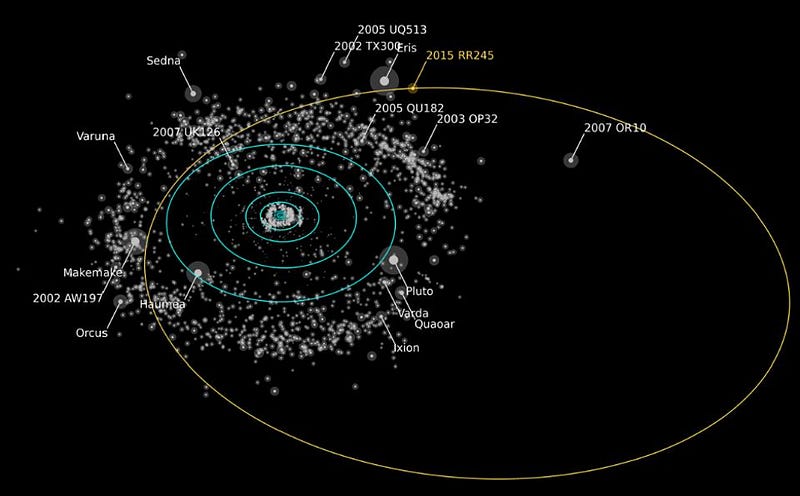
At the same time that we were discovering the first additional Kuiper belt objects, we were also finding the first exoplanets. The first planets we found were the easiest type to find: the largest-mass worlds orbiting close in to their parent stars. As techniques and technology improved with the passage of time, we began to find large numbers of worlds of all different masses at a variety of orbital distances from their stars. These exoplanet solar systems have proved to be vast, varied and rich, showing us that our Solar System is both nothing special and not even necessarily the norm. The diversity of what’s out there is tremendous.
https://www.youtube.com/watch?v=o_hm2ETTZzU
So who gets to be a planet? And who determines it? The IAU’s original, 2006 definition was as follows:
- It needs to be in hydrostatic equilibrium, or have enough gravity to pull it into an ellipsoidal shape.
- It needs to orbit the Sun and not any other body.
- And it needs to clear its orbit of any planetesimals or planetary competitors.
As you can see, it’s problematic from the start. For one, it doesn’t define “planet” for any star system other than our own. For another, “clearing its orbit” seems pretty subjective and dependent on what else is out there. (If you were to place Jupiter too distant from the Sun, it would fail to clear its orbit; would it therefore stop being a planet?) And even if you replaced “the Sun” with “its parent star,” it isn’t like we can measure exoplanetary systems well enough to tell whether their orbits are cleared or not. The definition isn’t precise enough.

On the other hand, planetary scientists have proposed a geophysical definition for a planet:
A planet is a sub-stellar mass body that has never undergone nuclear fusion and that has sufficient self-gravitation to assume a spheroidal shape adequately described by a triaxial ellipsoid regardless of its orbital parameter.
But this poses a set of problems, too. Large moons (like ours) and asteroids would become planets. Charon, Pluto’s moon, would be a planet. In fact, over 100 known objects in our Solar System alone would become planets. In our efforts to include Pluto, we include every non-stellar object more massive than about 0.01% of Earth’s mass. The big problem is it’s far too inclusive.
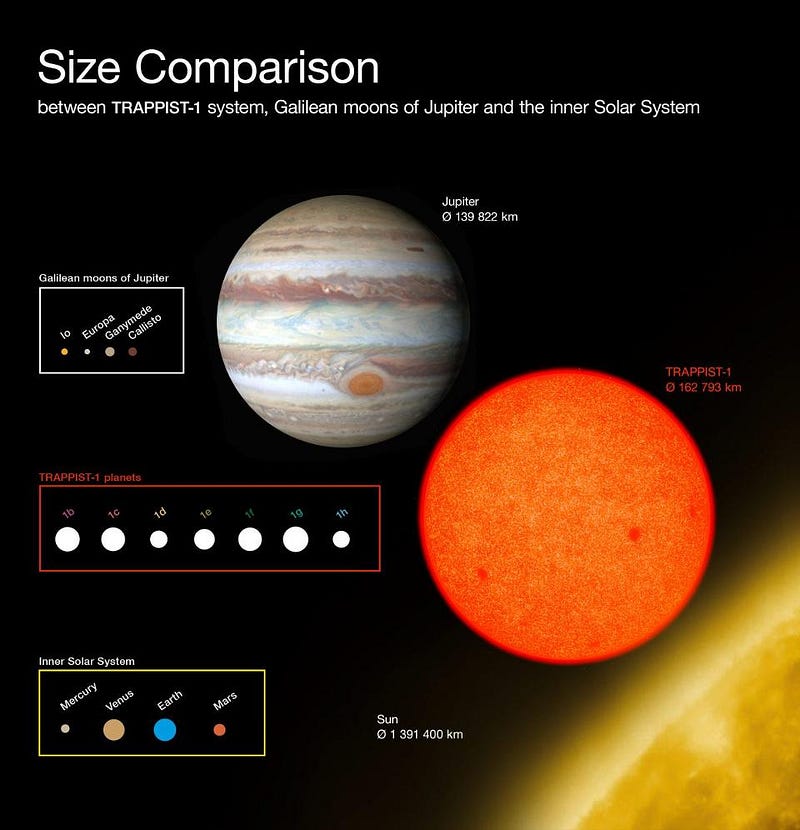
Solar systems come in huge varieties. The recently discovered system around TRAPPIST-1 looks more like Jupiter and its moons than like our Sun and its revolving worlds, but these seven Earth-sized bodies should definitely be planets. They meet the geophysical definition, but that’s only the starting point. They also — and you may feel strongly or less-strongly about some of these — meet the following requirements:
- They orbit their parent star.
- They dominate their orbits in terms of mass and orbital distance.
- They would clear out any debris in their orbit in well under 0.1 billion years.
- And their orbits, barring any outside influences, will be stable as long as their star exists.
What’s perhaps most remarkable is that we can make a simple, mathematical relationship between a world’s mass and its orbital distance that can be scaled and applied to any star. If you’re above these lines, you’re a planet; if you’re below it, you’re not. Note that even the most massive dwarf planets would have to be closer to the Sun than Mercury is to reach planetary status. Note by how fantastically much each of our eight planets meets these criteria… and by how much all others miss it. And note that if you replaced the Earth with the Moon, it would barely make it as a planet.
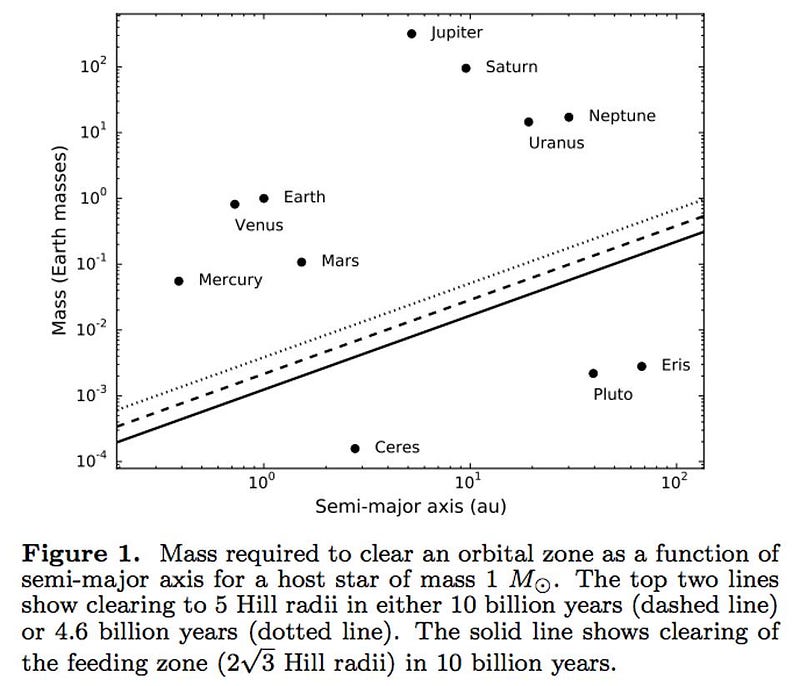
When it comes to planetary status, geophysics isn’t enough. In astronomy, the three rules of real estate also apply: location, location, location. There’s something very meaningful about our place in the Solar System that makes Earth a planet and Pluto not-a-planet. If we’re being honest about our Solar System and the number of planets within it, there are very clearly eight objects that are different from all the others.
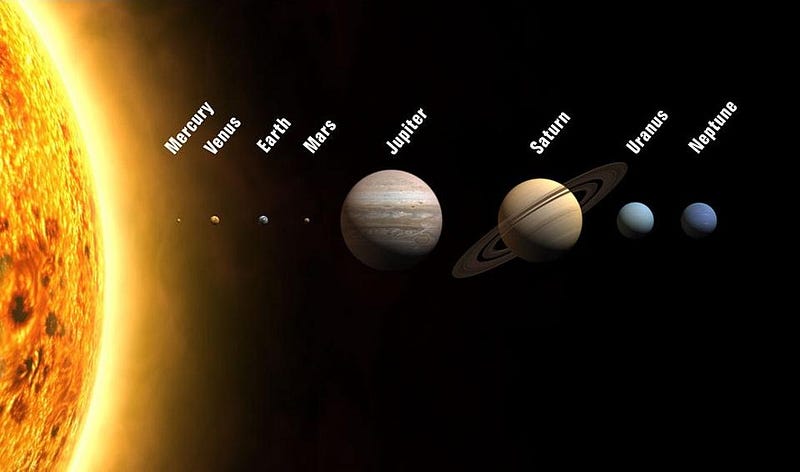
There’s a limit to how far you can move Earth away before we become a dwarf planet or even a rogue (or orphaned, i.e., star-less) planet, and it’s important to have a real definition that means something wherever we look.
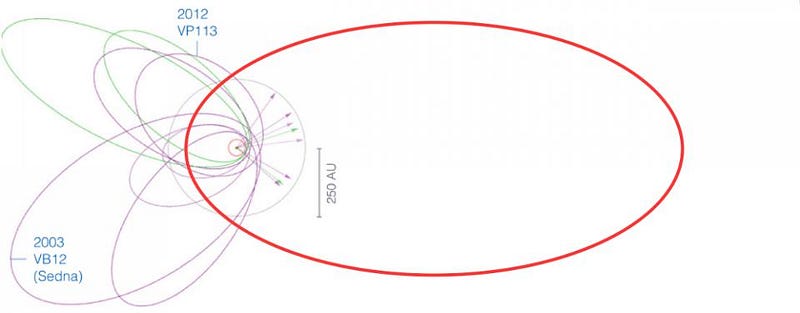
After all, the next decade should teach us whether there’s a larger-than-Earth mass out in the distant Solar System: what’s been dubbed Planet Nine. If this world does exist, we should be able to determine its mass and its orbital parameters. It will be an interesting object, a tremendous discovery and a fascinating world whether it makes it as a planet or not. But will it meet not just the geophysical but the astronomical criteria for being a planet? That’s a scientific question that should have a right (and wrong) answer. It’s up to us to draw the planetary line correctly, unswayed by our own biases and opinions.
This post first appeared at Forbes, and is brought to you ad-free by our Patreon supporters. Comment on our forum, & buy our first book: Beyond The Galaxy!





